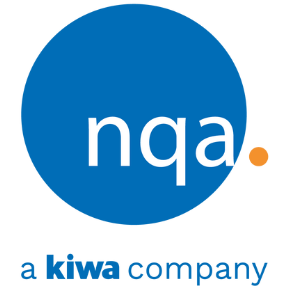Edinburgh Zoo Case Study
A leading centre of conservation and home to over 1,000 animals, Edinburgh Zoo prides itself on green credentials. But the attraction wanted to extend the work done sustaining environments within the zoo and the world outside. Key to this was establishing an environmental management system. In doing so they’ve reduced energy consumption by 5%, minimized waste generation and successfully embedded environmental objectives in all job functions. And with our help they were able to achieve the highly sought after ISO 14001 standard.
Given its commitment to conservation it is perhaps not surprising that Edinburgh Zoo decided to seek certification to the environmental management standard ISO 14001 as official recognition of its own environmental good practice.
Owned by the Royal Zoological Society of Scotland, it is devoted to the conservation of animals and their habitats and is one of Europe’s leading centres of conservation, education and research.
The Zoo combines this objective with maintaining its position as one of Scotland’s leading tourist attractions, with hundreds of thousands of visitors each year.
Continual improvement
Edinburgh Zoo originally went through the certification process with NQA in 2009. A key part of the standard is an ongoing commitment to continual improvement, and the Zoo monitors its progress through the annual audit visits that are a requirement of the standard.
For Stuart Jenkinson, Safety, Health and Environmental Manager at the Zoo, the purpose of certification is twofold. Firstly it serves as a very public endorsement of the organisation’s commitment to reducing the environmental impact of its operation and secondly the rigour of the annual review process ensures that all aspects are thoroughly covered.
Working together
“When we started the certification process we had a number of diverse environmental initiatives in place in different parts of the organisation. Edinburgh Zoo combines a visitor attraction that is home to our animal collection, with scientific, research and education facilities. The Zoo is very much like a small town in its own right with many differing trades and occupations. It is very different to a conventional business that has one or similar production lines.”
The first challenge, therefore, was to agree some basic objectives and to devise a structure in which these would be implemented and managed – making sure that staff understood why the whole process was being initiated and why it is important they buy into the process.
A Green Team was formed comprising representatives from the various departments, all of whom contributed to discussion on overall objectives as well as designing a process that would work within their own discipline.
It was vital to get all staff on board and, most importantly, to get to the point where the environmental objectives became absolutely embedded in people’s day to day job function.
Target setting
A number of strategic targets were set and this had the effect of unifying effort and ensuring that everyone involved sees their efforts as being directed to a single tangible result.
“Last year the Zoo set itself the target of reducing its energy consumption by 5%. The detailed measuring processes allow us to monitor very accurately the energy consumed throughout all the areas within the Zoo and see the impact of every action taken to reduce it. Just as importantly, the accurate measurement also makes the financial impact of energy saving very apparent”.
The 5% target was reached last year which is a great testament to the commitment of the staff. This level of efficiency can only be achieved if every individual becomes conscious of their daily actions and how they contribute to the overall goal.
It is this continual focus that is the key benefit of the certification process and the regular annual audit is an important discipline.
Keeping on track
“Every year the NQA auditor comes to site to check that our processes are functioning properly. Their visit is very significant as it sends a clear signal that we regard the standard as very important and that we have to meet the criteria set by an independent organisation”.
Jenkinson continues:
“The visits themselves are always very helpful, as our auditor will not only check what we are doing, but will always offer proactive suggestions as to how things can be further improved. Having said that, it is also important to recognise that we could not be in a position to maintain ISO 14001 certification if our staff were not committed to the management of their environment. It is not about just dusting down the procedure once a year in time for the audit, it’s about living the objectives every day.”
Edinburgh Zoo continues to monitor its environmental performance and is looking for ongoing reductions in its use of resources – not just power, but also water consumption.
It is a particularly good example of how commitment to a single standard can introduce a unified approach to meeting specific goals across a large and disparate organisational structure.
